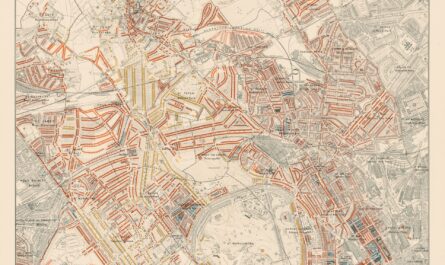Photo: The Mission Of Mercy; Florence Nightingale Receiving The Wounded At Scutari (1857)
Jerry Barrett (English, 1824–1906)
“Problems frequently get easier if you turn them around in reverse. In other words, if you want to help India, the question you should ask is not ‘how can I help India,’ it’s ‘what is doing the worst damage in India and how do I avoid it?” – Charlie Munger
The inversion principle is reversing the way you approach a problem; it’s looking a problem backward. One way to do this is imagining what could go wrong with the project, and working backward to prevent those defects. Look at all the things which could go wrong and work backward to make sure they don’t occur. This is especially pertinent when planning a project. Asking, “What could derail this project?” is a great first step.
How does inversion differ from problem solving? Usually, when we think about a project, we think from our current state forward into the future. We plan step 1, step 2, step 3. Inversion starts at the end, often with the conclusion that the project failed. Working backwards, thinking through why the project failed, and correcting those errors allows you to eliminate problems early, from the planning stage.
Florence Nightingale used inversion to great effect when she made her breakthrough in nursing hygiene. During the Crimean War (1853-1856), Nightingale observed more soldiers were dying from disease than of battle wounds. She worked backward to learn why so many soldiers were ill with disease. Historian Eileen Magnello describes the impossible conditions, “There were no blankets, beds, furniture, food, or cooking utensils, but there were rats and fleas everywhere.” Nightingale began the now-standard practices of scrubbing floors, regularly bathing patients, and changing linens. In six months, the hospital’s mortality rate dropped by 40%. By implementing these hygienic practices for the nurses, doctors, and facilities, the caregivers were able to prevent many diseases from spreading, giving wounded soldiers better chances to recover and keeping everyone else healthy. Instead of attempting to solve the problem of hundreds of soldiers sick with disease, Nightingale asked, “How can we prevent the deadliest risk to these soldiers?” Critically, Nightingale then made this information available to the public, helping the general population understand and practice general hygiene, and dramatically reducing infection and death rates for the entire area. Her findings, of course, began modern nursing as we know it.
Going against the natural starting point can help us think more creatively about solutions and problems. Assume your point is false or true, then walk through the steps and process to prove that is the case. Alternatively, make your goal to avoid failure. Ask yourself, “In what ways might this fail?” and avoid those pitfalls.
Instead of asking, “How do I beat the odds?” ask “What can I do now to ensure I don’t fail?” Instead of aiming to get rich, aim to avoid poverty. Invert how you think about the goal you are working toward, and you can prevent many problems from even occurring.




